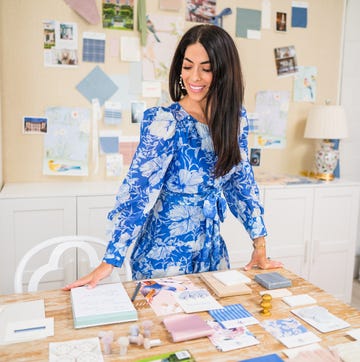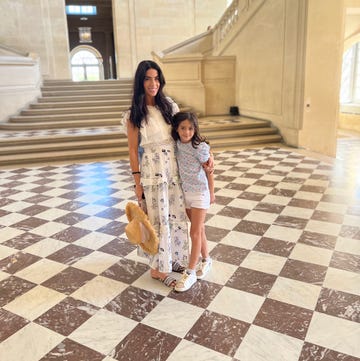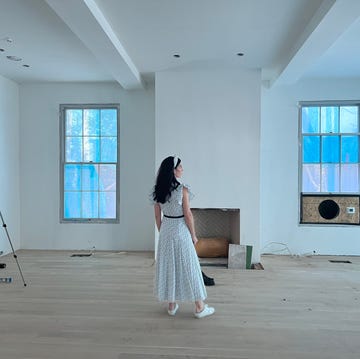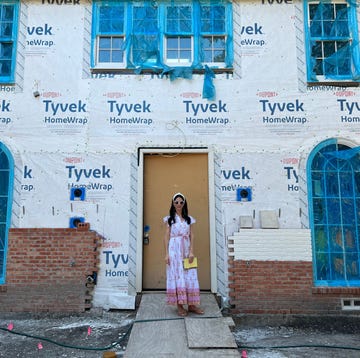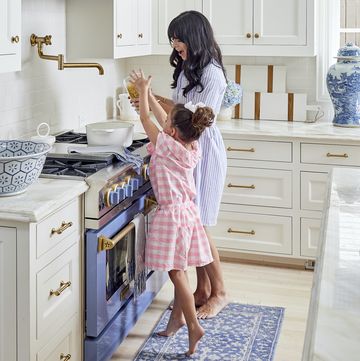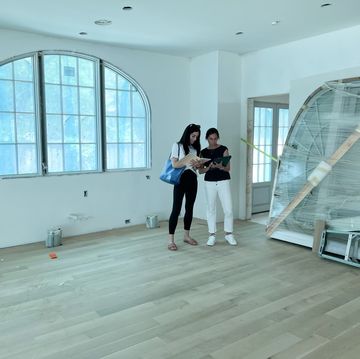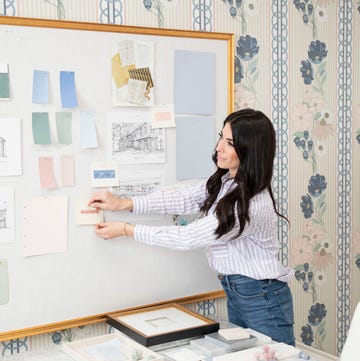Call it what you will—mudroom, utility room, landing zone, even organization station—I think we can all agree on its importance. Unfortunately, when it comes to interior design, this part of our house is often relegated to the back burner. Out of necessity, we carve out a space that works double-duty with our laundry room, or our foyer, or our side entrance. Whether or not it’s a room of its own, this space accommodates our children’s backpacks and athletic gear, pet food, raincoats and snow boots. We do the best we can with shelving, hooks, baskets or lockers, and we try to bring order to the chaos.
At least, that’s always been my experience. But with this house, we have a once-in-a lifetime opportunity to build our mudroom from the (muddy) ground up. Because our new mudroom connects to our downstairs addition, we have architectural and design flexibility.
Of course, while the mudroom’s location provides a perfect canvas, the life that will happen within comes with its own challenges and opportunities. Here’s what I mean:
More From Veranda

- Children aren’t all that organized. Right now, lockers are the go-to mudroom storage design, and we think we have to have separate storage for each kid. But over the past few years, I’ve learned that children don’t keep their stuff organized at home like they do at school. I’ve decided to go with lockers in our mudroom, but I’m not going to have one for every child. With the extra space, I’m incorporating a shelf so we can easily stack books and load and unload on the go.
- Focus on the function. I often refer to the mudroom as our breezeway because it leads from our kitchen to the detached garage. Along the way, French doors open to our back patio. The patio houses our grill and a pizza oven, so I can imagine walking through with lots of dishes for entertaining. I’ve added two marble counter areas for temporary storage and serving areas.
- We spend a lot of time here. Just as every family is unique, so is every mudroom. In ours, I anticipate helping my girls prepare for the day. To that end, I’ve built in lots of customized drawers to wrangle ponytail holders, brushes and hairspray. If you’re designing a mudroom, consider the last 10 minutes before you leave your house each morning and the first few minutes when you come home every afternoon. For many of us, our mudroom space is our goodbye and our welcome home. What will it take to make those brief-but-critical transition periods more pleasant?
- Mudrooms experience a lot of wear and tear. Don’t skimp on durable materials and well-made cabinetry.
- Shoes aren’t always photoshoot-worthy. You’ve seen the Instagram images of shoe racks, where beautiful heels are all in a row and colorful tennis shoes have their own display-worthy cubbies (fortunately, those photos are not scratch-and-sniff!). In our mudroom, we’re incorporating a metal mesh at the front of the lower cabinets to allow for my kids’ favorite shoes to be accessible (and well-ventilated!).
- Beauty is in the details. Just because it’s durable doesn’t mean it can’t be pretty. You can do a lot with hardware, lighting, and adding a textile here and there—whether it’s in the form of a Roman shade or a bench cushion. I’m drawn to the traditional yet sturdy brass hardware from the English brand Armac Martin.
- We track through this space all day, every day. That’s why I’ve spent a long time thinking about how to make the flooring both functional and beautiful. We created a custom pattern out of three Paris Ceramics colors, predominantly limestone and black. Without incorporating stark white, the result feels sophisticated and clean. Because the visual interest in our mudroom will fall to the floor, I opted out of any sort of crazy wallpaper and instead chose serene paint colors. It’s my version of minimal—which is really not that minimal at all!
This is part eleven in our Along for the Revival series with Caitlin Wilson. Get caught up with the rest of the series here.


